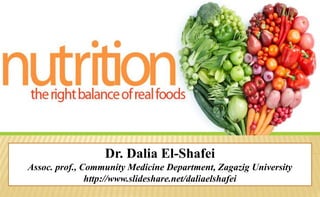The document discusses malnutrition, its causes, and prevention strategies, highlighting issues like undernutrition and obesity. It covers various deficiencies, including protein-energy malnutrition and micronutrient deficiencies, and the respective health consequences. Preventive measures are emphasized, including nutrition education, dietary changes, and community-level interventions to address malnutrition's prevalence and effects.


























































































































